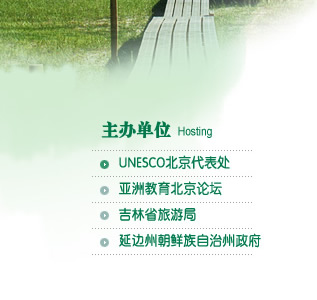|
Paper for The International Tourism, Culture and Education Forum—New Approaches to Sustainable Tourism and Human Resource Development, held in Yanji City, Jilin, China, co-organized by UNESCO (Beijing), Education Forum for Asia Secretariat, the Tourism Bureau of Jilin Municipal Government and the Yanji Municipal Government of Yanbian Korean Autonomous Region, July 14-15, 2007.
Heritage Preservation and Cultural Diversity for Tourism Development in Hong Kong
Sidney C.H. Cheung
The Chinese University of Hong Kong
Hong Kong, with its dominant image as an Asian global city as well as gateway to mainland China, has been representing itself with an image of East meets West for its tourist attractions in the last century. In order to maintain this image for its world visitors, there is no doubt that Hong Kong needs to find a balance between its global metropolitan aspect and unique cultural heritage with local characteristics in many ways. Yet, before moving on for extensive tourism development, we might want to think about: What kind of heritage preservation do we want? What kind of long-term policy do we have? How should the heritage management be carried out? More importantly, do we have enough debate on whether heritage should be managed for tourism development and how heritage tourism will not be overlooked as economic-lead as well as market oriented process of commoditization. Here, I will discuss with my experience in studying heritage preservation including how conflict and resistance arose in a heritage trail when residential environment is used for tourism, and the possibility in developing abandoned traditional villages for heritage tourism with the support of indigenous inhabitants. Also, I will comment on how tourism strengthens the local identity with the examples of heritage preservation movement in the urban district and draws the public attentions on the meanings of border regarding natural heritage as well as wetland conservation lying between Hong Kong and Shenzhen, PRC.
The prosperity of Hong Kong is paralleled by the active and rapid development of its tourism industry. In 2006 Hong Kong experienced 25.25 million tourist visits, generating HK$ 117.3 billion in income and making the tourism industry the second largest generator of foreign currency. However, with the rapid development of tourism in Macau and South China, Hong Kong’s inbound tourism has faced considerable competition from these neighboring destinations, while local residents are also tempted to leave the country on vacation. This means that Hong Kong is faced with a dual challenge: it needs to attract international tourists to stay longer, to shop more and to do more sightseeing, and it also has to provide local attractions for domestic tourists so that residents can enjoy weekend breaks and day-trips at home instead of travelling to Macau or Shenzhen.
The first aspect to consider is the establishment of tourism-related organizations and their growth. The Hong Kong Tourist Association (HKTA) was a statutory body established by the government in 1957 which was reconstituted as the Hong Kong Tourism Board (HKTB) in 2001. The primary responsibilities of HKTB are to form the image of Hong Kong and market it as an international tourist destination. Thus, cultural heritage and nature-based tourism activities have recently been given considerable prominence in international tourism promotional efforts. In 1995 a campaign called ‘Wonders Never Cease’ was launched, with programmes focussing on cultural heritage in the New Territories, providing experiences of pre-colonial, rural Chinese and ‘unchanged’ lifestyles for foreign visitors. The programme included heritage tours and included the establishment of the Ping Shan Heritage Trail in 1993. This drew attention to the traditional, rural side of Hong Kong as well as the modern cosmopolitan side. With increasing demand, two more heritage trails were created, namely the Central and Western Heritage Trail and the Lung Yeuk Tau Heritage Trail.
In addition to cultural heritage, HKTB also emphasized the ‘green side’ of Hong Kong. After the 1997 handover of Hong Kong from British jurisdiction to the PRC, Hong Kong’s tourism industry started to decline. A new campaign entitled ‘We are Hong Kong, City of Life’ was launched in May 1998 to try and address this, and emphasized a diversity of tourist experiences including the region’s diverse ecological and natural environment. Despite the dominant metropolitan image of Hong Kong, the HKSAR government has devised different strategies to encourage nature-based tourism, one of which is through the sustainable utilisation of natural resources. The potential for tourism of the hitherto neglected rich natural resources finally received attention in the 1990s, and the success of the Hong Kong Wetland Park, which opened in 2006, provides the opportunity to review the growth of domestic nature-based tourism and changes regarding wildlife conservation and education. Nature-based travel and leisure activities promoted included dolphin-watching, bird-watching, butterfly-watching, recreational and educational centers, nature trails, coastal walks, and hiking in country parks.
|










